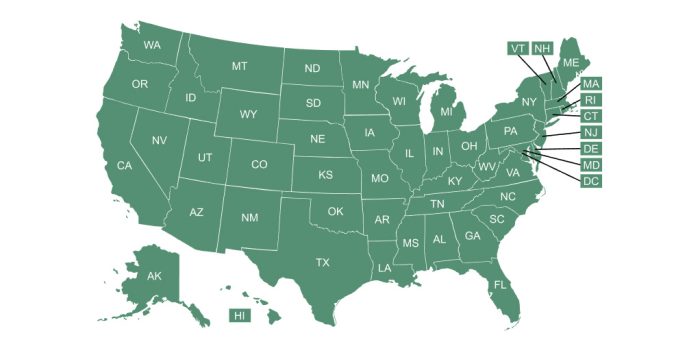Who's eligible for a Qualified Income Trust?
In some states, individuals whose incomes are higher than the eligibility limit for Medicaid nursing home benefits or Home and Community Based Services (HCBS) benefits can qualify for those services by depositing income into a Qualified Income Trust (QIT), which is also called a “Miller Trust.”
Medicare doesn’t cover long-term care services (i.e. custodial care, as opposed to medical care), but Medicaid does. In most states, Medicaid uses a special income limit – which usually amounts to $2,349 a month in 2020 – to determine eligibility for these long-term care benefits. Some states with a special income limit have a Medicaid spend-down, which allows applicants to subtract medical or long-term care expenses from their income that is counted toward the Medicaid eligibility limit.
But in states that don’t have a Medicaid spend-down that covers long-term care, applicants with incomes higher than the limit but less than the cost of nursing home care could have trouble paying for their care. Federal rules require states to allow those applicants to use a Miller Trust to qualify for Medicaid.
What is a Miller Trust?
Miller Trusts are a special type of trust that is allowed to contain only money that is considered income. When this income is deposited into the Miller Trust in the month it is received, it does not count toward the Medicaid eligibility limit. (Income deposited too long after it is received will be considered an asset – and may impact eligibility.)
How do individuals set up a Miller Trust?
Establishing a Miller Trust requires opening a bank account, establishing a trust document, and selecting a trustee – or the person who will manage the trust account. This can’t be the Medicaid applicant, but could be a relative or an older child.
Which states allow applicants to use a Miller Trust?
In 2020, there are 25 states that allow applicants to use a Miller Trust to qualify for Medicaid long-term care benefits. Most of those states allow a Miller Trust to be used to qualify for either nursing home benefits or HCBS, but Alabama and Wyoming only allow the use of Miller Trusts to qualify for nursing home coverage.
Some states limit the money that can be deposited into a Miller Trust each month, while others limit the monthly income a person can have in order to use a Miller Trust to become eligible for Medicaid.
Many states require Medicaid long-term care enrollees to deposit all of their income into the Miller Trust – but other states only require enrollees to deposit income above the Medicaid eligibility limit.
Because long-term care enrollees must contribute to the cost of their care, much of their income is paid toward care from the Miller Trust. However, the following payments can be retained each month:
- A personal needs allowance, which is from $30 – $130 for nursing home enrollees – but can be as high as the Medicaid income limit for HCBS recipients.
- Money to pay for health insurance and Medicare premiums.
- A Minimum Monthly Maintenance Needs Allowance (MMMNA) for a long-term care enrollee’s spouse.
What happens to unspent funds in a Miller Trust?
Money left in the Miller Trust is paid to Medicaid when an enrollee passes away.


